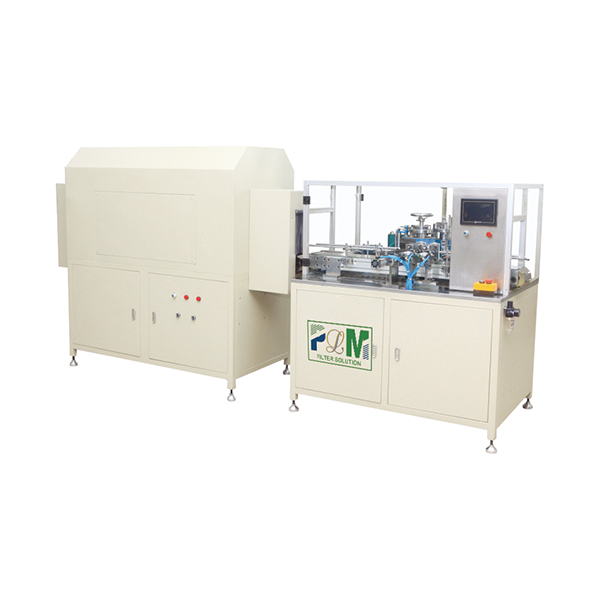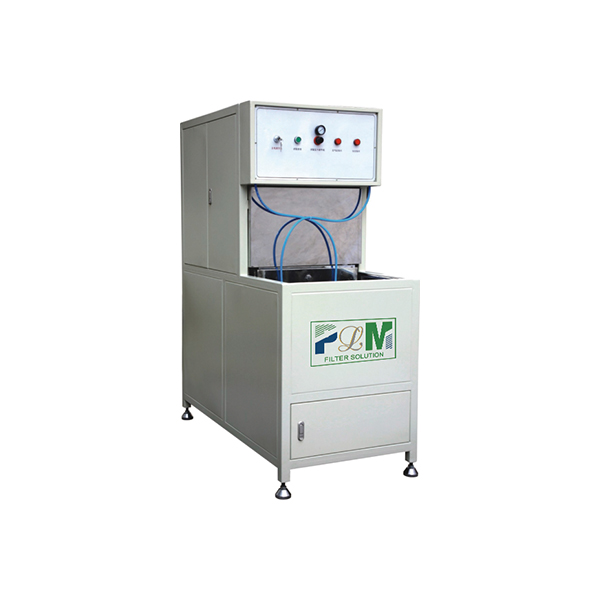Oct . 16, 2025 14:35 Back to list
PP Spun Filter Cartridge Making Machine | High-Speed Auto
Inside a modern pp spun filter cartridge making machine: notes from the factory floor
If you’ve ever toured a filter plant, you know the soundtrack: the hush of melt-blown lines, the snappy rhythm of pleat-folders, the hiss of ultrasonic welders. To be honest, the machine that surprised me most lately wasn’t the big extruder—it was a compact folder, the PL-AUTO55-1050F Automatic Four-generation Folding Machine. It’s used as a core station in many pp spun filter cartridge making machine lines, especially for creating support or protective pleats around melt-blown cores. Simple idea, very fussy execution.

What’s trending in cartridge production
- Higher consistency at lower labor input—automatic folding and closed-loop control are now baseline expectations.
- Validation-ready QA—buyers ask for traceable test data tied to ISO/ASTM methods rather than “feel-good” checks.
- Modularity—swap media from PP to PET or composite layers without spending a week retooling.
Typical process flow (PP spun cartridge line)
Here’s the cliff-notes version I use when training junior engineers. Real-world layouts vary, obviously:
- Raw materials: PP homopolymer pellets (FDA 21 CFR-compliant grades), optional pigments, and PP core tubes.
- Melt-blown: microfiber web formed and calendared; target micron ratings 1–50 µm (β5000 per ISO 16889 where applicable).
- Pleat folding: the PL-AUTO55-1050F forms support/guard pleats (uniform pitch is crucial for pressure drop stability).
- Assembly: wrap support layer around core; thermal or ultrasonic bonding of end caps.
- Testing: bubble point or air diffusion, burst strength, dimensional checks, particle retention challenges (ASTM/ISO references below).
- Cleaning & packing: ISO 14644-classified rooms for critical industries, labeled with batch traceability.
Product snapshot: PL-AUTO55-1050F Automatic Four-generation Folding Machine
| Model | PL-AUTO55-1050F |
| Folding width | ≈ 20–1050 mm (media-dependent) |
| Pleat pitch range | ≈ 3–60 mm; pitch repeatability ±0.3 mm in typical setups |
| Line speed | Up to around 55 m/min (real-world use may vary) |
| Power / Supply | ≈ 7–12 kW; 380V, 50/60 Hz, 3P (configurable) |
| Origin | East of Anping County, Hengshui City, Hebei Province, China 053600 |
Field notes: on PP/PET nonwovens we saw gentle handling, low fuzz, and consistent creasing. One customer told me they finally got away from “accordion wander,” which had been messing with differential pressure curves.
Applications and service life
Industries: food & beverage prefiltration, chemicals, coatings, microelectronics rinse lines, RO pre-treatment, and compressed air polishing. Cartridges made on a pp spun filter cartridge making machine typically last ≈ 3–12 months, depending on inlet solids, viscosity, and CIP frequency. Support pleat stability helps delay early blinding—less changeout drama, frankly.
Test methods and indicative data
- Particle retention: multi-pass per ISO 16889 (β-ratio reporting); typical β1000 at rated micron.
- Integrity: bubble point/air diffusion for wet-laid or composite layers (method aligned with ASTM practices).
- Burst strength: >0.6 MPa for standard PP cores (lab examples; media and bond change results).
- Cleanroom packing: target ISO 14644-1 Class 8 or better for sensitive uses.
Vendor landscape (quick take)
| Vendor | Strengths | Lead time | Support |
|---|---|---|---|
| MFilterSolution (PL-AUTO55-1050F) | Focused pleat folding know-how; configurable pitch; practical fixtures | ≈ 3–6 weeks | On-site setup/training available in many regions |
| Vendor B (EU) | Integrated line packages; CE documentation baked-in | ≈ 6–10 weeks | Strong remote diagnostics |
| Vendor C (APAC) | Budget-friendly; quick spares | ≈ 2–5 weeks | Email-first support, add-on field service |
Customization tips
- Media path and tension control tuned separately for PP vs. PET to prevent micro-cracking.
- Quick-change pleat wheels when shifting from 5 mm to 25 mm pitches—saves a surprising amount of downtime.
- Electricals: many buyers spec CE/UL components and lockable safety guards from day one.
Mini case
A coatings plant in Southeast Asia swapped their legacy folder for the PL-AUTO55-1050F. They reported around 18% better pleat uniformity (by optical scan) and a 9–12% reduction in average ΔP at constant flow, mostly from tighter pleat alignment. Their line crew said, “we finally stopped babysitting the pleats.” Small win, big effect.
Standards and references
- ISO 16889: Hydraulic fluid power—Filters—Multi-pass method for evaluating filtration performance. https://www.iso.org/standard/37083.html
- ASTM F838: Bacterial retention testing of membrane filters (context for integrity concepts). https://www.astm.org/f0838-20.html
- FDA 21 CFR 177.1520: Polypropylene for food contact. https://www.ecfr.gov/current/title-21/part-177
- ISO 14644-1: Cleanrooms and associated controlled environments. https://www.iso.org/standard/53394.html
- ISO 8573-1: Compressed air—Contaminants and purity classes. https://www.iso.org/standard/72103.html
Comprehensive Guide to Filter Caps: Applications, Benefits & Future Trends
NewsNov.24,2025Filter Paper: Essential Guide for Industry and Global Applications
NewsNov.23,2025Essential Guide to Filter Materials: Types, Applications, and Future Trends
NewsNov.22,2025Efficient Long Pulse Dust Collector Pleated Filters for Superior Industrial Air Quality
NewsNov.22,2025Professional Air Filter Making Machine – Efficient Air Filtration Production Solutions
NewsNov.21,2025PLAB-6 A/B Glue System-Hebei Filter Man|Precision&Adjustable Speed
NewsNov.21,2025






